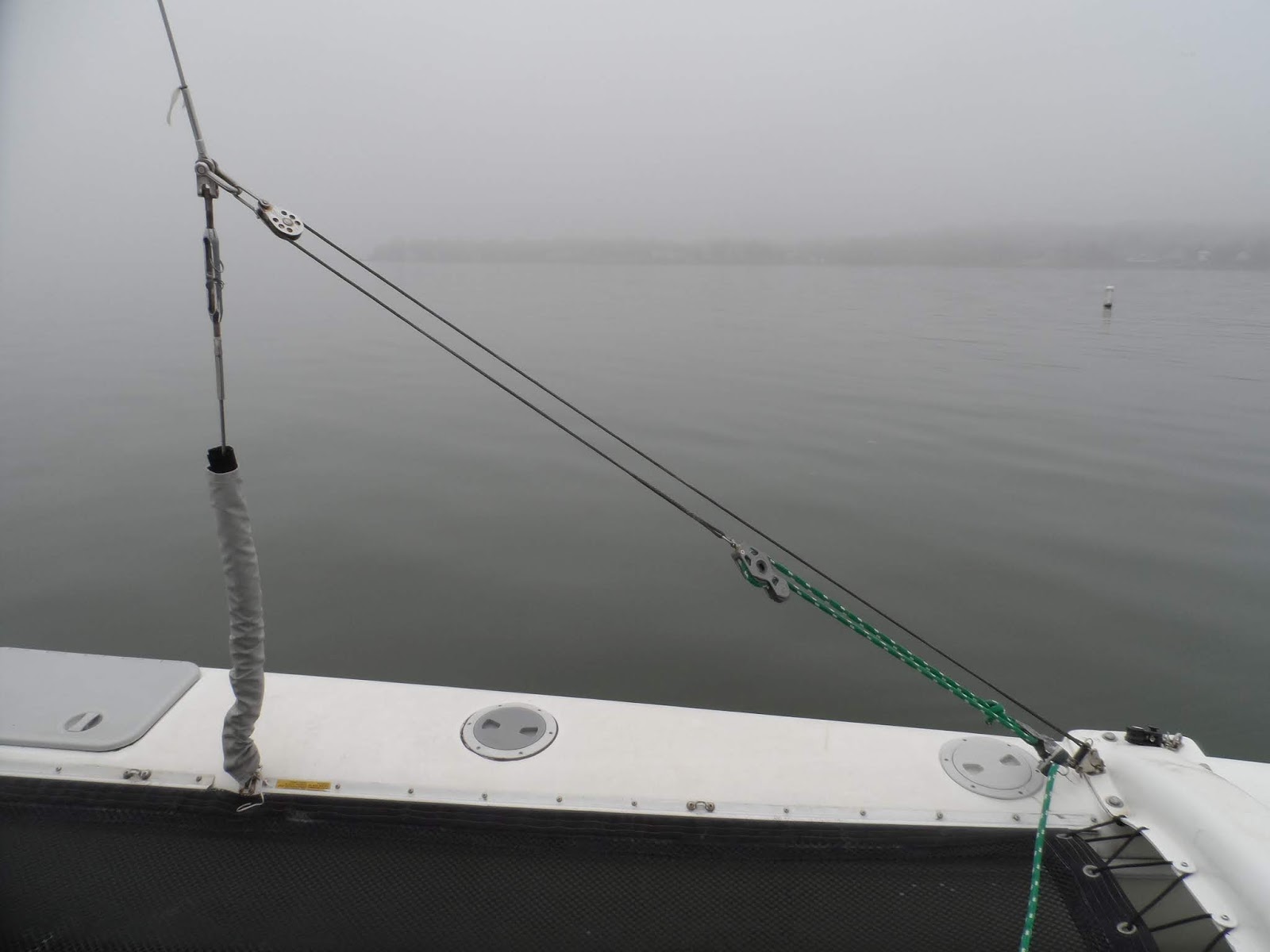There's a couple of dinged up standing rigging bits on my O'Day 19... a crimped backstay tail, a bent turnbuckle, etc. The rest of the rigging looks good to my neophyte eye, but I can only check for the obvious stuff: rust, meat hooks, etc. New rigging from D&R isn't horribly expensive, but it's another expense to take care of before she hits the water. The expenses do tend to add up, and I'm at the stage where I'm really wanting to hit the water.
I'm not keen on tackling steel cable rigging myself, despite being a diehard DIYer. There's a lot riding on those cables, and it'd really suck to have one fail and watch the mast come down because a bad fitting I did myself. Being located in the Capital District of Upstate NY, I'm pretty sure I'll be able to locate someone to fab up a new tail (assuming I can't get one from Rudy), press on the other half of that turnbuckle bolt (assuming I can; might need to replace the whole stay), and give the rest of it a look over to rest my worried mind.
On the other hand... that Tylercraft 24' sitting out in front of my house is going to need replacement rigging, too. It's *bad*... and for me to say it's bad has got to mean its *BAD*. Rusted cable, bent turnbuckles, you name it. I'll have to swap it all out before she hits the water. Researching my options there lead me to synthetic rigging, which tickles my DIY tendencies.
Which got me thinking... what about replacing the rigging on the O'Day with synthetic? New England Ropes HTS-78, specifically. More expensive than fixing the existing steel cable, most likely, but I'll learn something splicing it. I'm a little concerned about the construction creep, though... most demonstrations I've seen online have been on non-trailer sailers, where the mast is left up along with the rigging. They can tension that synthetic cable down, let it creep, and reset the tension to accommodate. The O'Day rigging manual I've got mentions tightening the rigging no more than hand tight (specifically noting that the leeward shrouds will go slack and should not be tightened). Sure doesn't sound like that's enough to take the construction creep out of the rope, and I haven't heard enough tales of using synthetic on a weekender trailer to give me warm fuzzy feelings about using it.
Thoughts?
I'm not keen on tackling steel cable rigging myself, despite being a diehard DIYer. There's a lot riding on those cables, and it'd really suck to have one fail and watch the mast come down because a bad fitting I did myself. Being located in the Capital District of Upstate NY, I'm pretty sure I'll be able to locate someone to fab up a new tail (assuming I can't get one from Rudy), press on the other half of that turnbuckle bolt (assuming I can; might need to replace the whole stay), and give the rest of it a look over to rest my worried mind.
On the other hand... that Tylercraft 24' sitting out in front of my house is going to need replacement rigging, too. It's *bad*... and for me to say it's bad has got to mean its *BAD*. Rusted cable, bent turnbuckles, you name it. I'll have to swap it all out before she hits the water. Researching my options there lead me to synthetic rigging, which tickles my DIY tendencies.
Which got me thinking... what about replacing the rigging on the O'Day with synthetic? New England Ropes HTS-78, specifically. More expensive than fixing the existing steel cable, most likely, but I'll learn something splicing it. I'm a little concerned about the construction creep, though... most demonstrations I've seen online have been on non-trailer sailers, where the mast is left up along with the rigging. They can tension that synthetic cable down, let it creep, and reset the tension to accommodate. The O'Day rigging manual I've got mentions tightening the rigging no more than hand tight (specifically noting that the leeward shrouds will go slack and should not be tightened). Sure doesn't sound like that's enough to take the construction creep out of the rope, and I haven't heard enough tales of using synthetic on a weekender trailer to give me warm fuzzy feelings about using it.
Thoughts?



